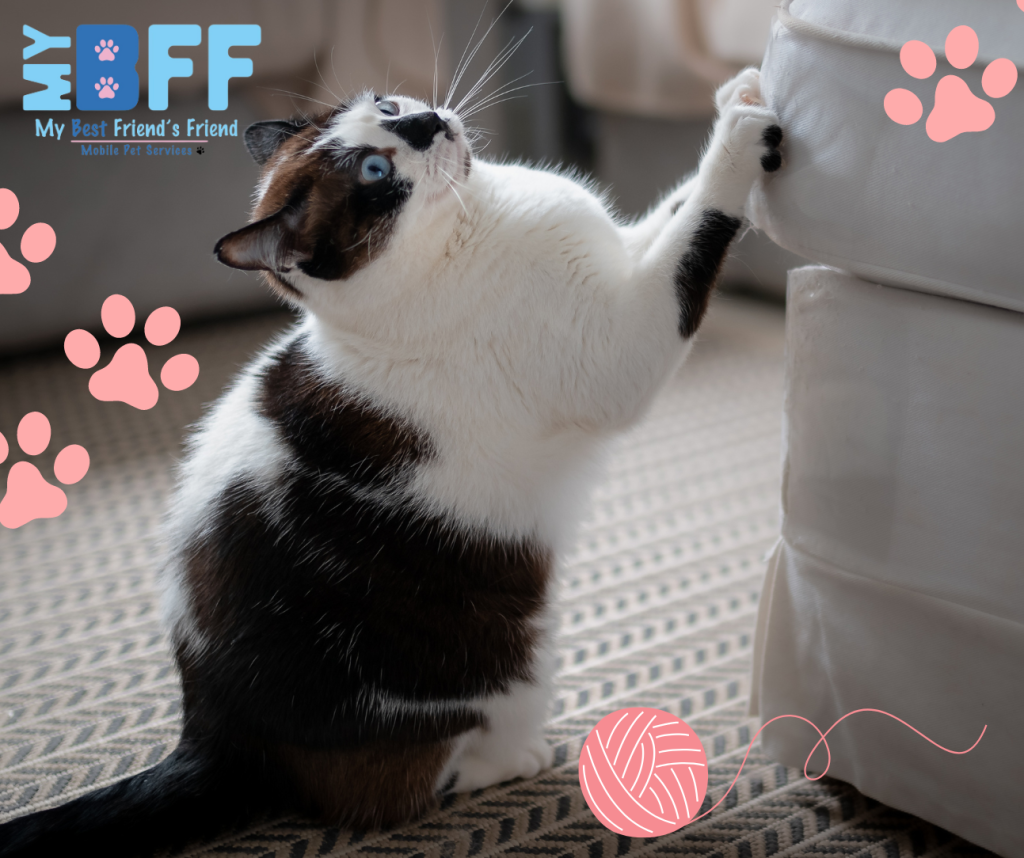If you’re a pet owner, you know the struggle: coming home to find your favorite shoes in shreds or discovering new claw marks on your furniture. While scratching and chewing are natural behaviors for many pets, they can be destructive if not properly managed. Here’s a comprehensive guide to help you curb these habits and maintain harmony in your home.
Understanding the Behavior
First, it’s essential to understand why pets scratch and chew. Dogs and cats often engage in these activities for various reasons, including:
- Teething: Puppies and kittens chew to alleviate the discomfort of teething.
- Boredom: Lack of mental stimulation can lead to destructive behavior.
- Anxiety: Pets may chew or scratch as a way to cope with stress or separation anxiety.
- Natural Instincts: Cats scratch to mark territory and maintain their claws, while dogs chew to keep their teeth clean and strong.
Training and Redirecting
Training is key to modifying your pet’s behavior. Here are effective strategies:
For Dogs:
- Provide Chew Toys: Offer a variety of chew toys to keep your dog occupied. Choose durable toys that are safe and match your dog’s chewing strength.
- Exercise and Play: Ensure your dog gets enough physical and mental stimulation. Regular walks, playtime, and puzzle toys can reduce destructive behavior.
- Training Commands: Use commands like “leave it” or “no” to discourage chewing on inappropriate items. Positive reinforcement, such as treats and praise, can reinforce good behavior.
- Crate Training: Crate training can help manage chewing when you’re not around. Ensure the crate is comfortable and stocked with appropriate chew toys.
For Cats:
- Scratching Posts: Provide scratching posts or pads in areas your cat frequents. Encourage use by rubbing catnip on them or dangling toys.
- Nail Trimming: Regularly trim your cat’s nails to reduce damage from scratching. Consider using nail caps if necessary.
- Deterrents: Use deterrent sprays on furniture to discourage scratching. Double-sided tape can also be effective.
- Interactive Play: Engage your cat in interactive play sessions to burn off energy and reduce boredom.
Environmental Enrichment
Creating an enriched environment can significantly decrease destructive behavior:
- Rotate Toys: Keep a variety of toys and rotate them to maintain your pet’s interest.
- Puzzle Feeders: Use puzzle feeders to make mealtime engaging and mentally stimulating.
- Safe Spaces: Provide safe spaces where your pets can retreat and relax. This can help reduce anxiety-driven behaviors.
Addressing Anxiety
If anxiety is the root cause, consider the following:
- Routine: Maintain a consistent daily routine to provide a sense of security.
- Comfort Items: Leave an item of your clothing with your scent to comfort your pet when you’re away.
- Professional Help: Consult with a veterinarian or a pet behaviorist if anxiety persists. They might recommend behavior modification techniques or anxiety-reducing products.
Conclusion
Preventing your pets from scratching and chewing up everything you own requires understanding their needs and providing appropriate outlets for their natural behaviors. With patience, consistency, and the right tools, you can protect your belongings and keep your furry friends happy and healthy. Remember, positive reinforcement and environmental enrichment are your best allies in curbing these common pet behaviors.
If you are in the Southwest Florida region and your pet is in need of a mobile groom we hope you will think of MY-BFF Pet services! www.MY-BFF.net | 239-339-3056.


